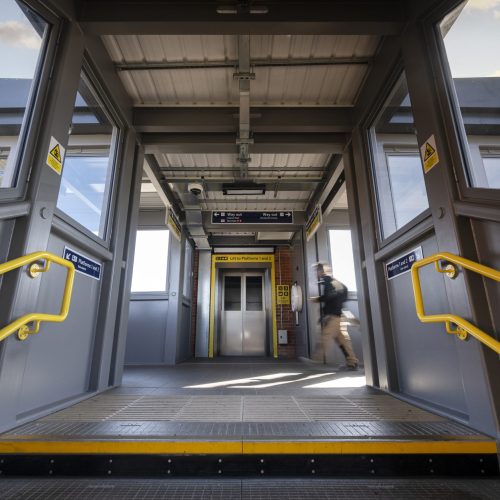Providing step-free access to platforms in legacy rail stations is often a significant feat of engineering. But these achievements on their own don’t necessarily make train transport accessible for people with reduced mobility.
For a start, can they easily get to the station in the first place? Access from the station entrance to the platform is one stage in a bigger journey involving different modes of transport. If these aren’t properly coordinated the value of any improvements made in and immediately around the station is diminished.
Once inside the station there’s the question of finding your way to the right platform. Not easy if the signage is unclear or there’s no accommodation for someone who’s visually impaired. A young, fit and fully mobile person can quickly change platforms if they get it wrong or misread a sign – someone in a wheelchair can’t.
The National Centre for Accessible Transport highlights how, for example, detailed landscape information (e.g. terrain, steps, slopes, surfacing and other physical features) is vital for journey planning but isn’t always easily available. This has to be part of the bigger Access for All (AfA) picture. Solution designs should always feature a virtual tour through the upgraded station to ensure the environment is as helpful as it can be.
Bridging the Gap
Once you get to the platform the story’s not over. Most trains on the UK network don’t have step-free access from the platform to the train. If there’s no support available to position a ramp, passengers can be left stranded on the platform and unable to board their train.
The ORR released data in July 2024 that showed that Passenger Assist doesn’t always work out. As many as 12% of people failed to receive any of the assistance they booked (up from 8% the previous year). Another 10% only received some of their booked assistance. Overall, 76% received all elements of their assistance booking – down from 81 per cent in 2022/23.
The lifts, ramps, tactile paving and other enhancements delivered through AfA are making a significant difference to many people. But we always remember there’s a difference between engineering work being completed, and the enhanced station being fully operational and ready to deliver easy access to the train for every traveller.
As an experienced AfA provider we never see our job simply in terms of engineering specifications and scope. Our goal is to make rail travel an effortless and enjoyable experience for everyone.
Sign-up to access our AfA resource area to find out more below.
Access Our Resource Centre
By signing up, you’ll gain access to our resource hub, designed to support rail operators, designers and project teams in delivering successful Access for All (AfA) projects.
Access valuable resources, including:
- Proven Practices: Practical guides on AfA project management to improve efficiency, reduce costs and achieve sustainable outcomes.
- Regulatory Guidance: Clear insights into compliance requirements to ensure your projects meet the highest standards of accessibility and safety.
- InnovateUK Report Summary: Detailed findings on the future of accessible and inclusive rail travel in the UK.
- House of Commons Report Overview: An overview of the legislative framework for AfA, including its alignment with the Equality Act 2010.
Sign up today to access these essential resources—completely free.

